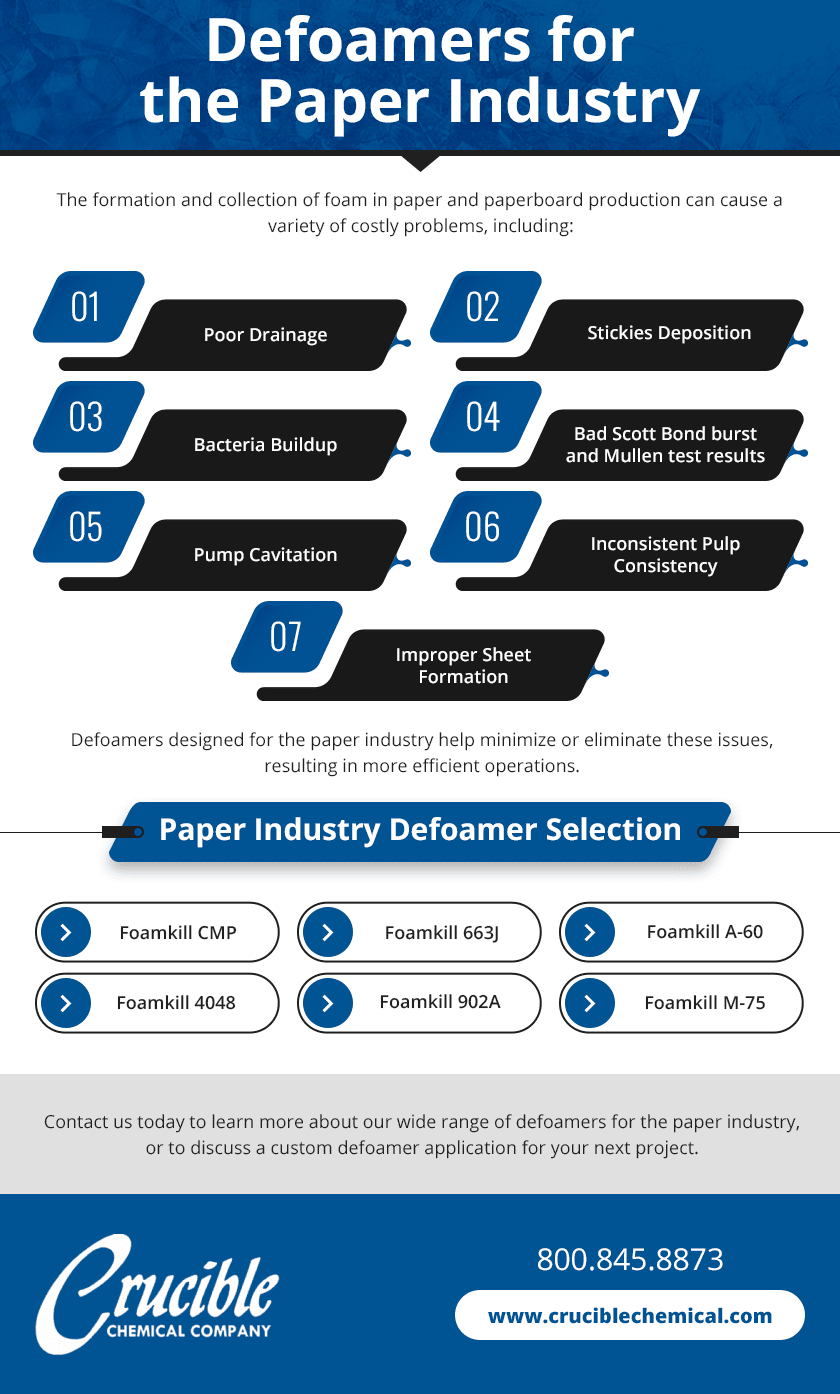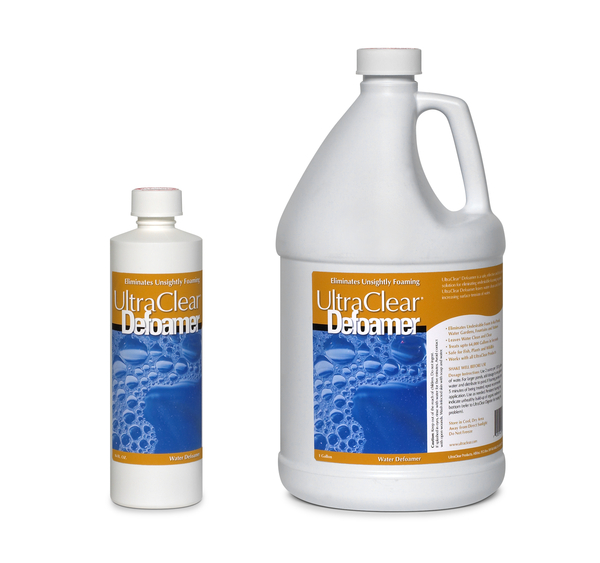Defoamers: Key Solutions for Managing Foam in Various Processes
The Function of Defoamers in Enhancing Product High Quality and Performance
Defoamers offer as important additives that alleviate this issue, making certain smoother production operations while improving the visual and functional characteristics of the final items. The selection of the appropriate defoamer can be vital to achieving optimum outcomes, increasing important concerns about solution compatibility and performance metrics that warrant more exploration.
Comprehending Defoamers
Comprehending the function of defoamers is essential for preserving product high quality across numerous markets. Defoamers are chemical ingredients created to reduce and avoid the development of foam in liquid systems, which can detrimentally influence procedures such as mixing, filling, and surface area tension. Foaming can result in inefficiencies, item defects, and jeopardized aesthetic charm, making defoamers a vital component in manufacturing procedures.
In commercial applications, defoamers assist to boost product consistency and stability. In the paint and finishings market, foam can conflict with the application procedure and the last coating. In food and beverage manufacturing, excessive foam can hinder bottling and packaging effectiveness. The effective use defoamers not just makes certain smoother production processes but also adds to premium product performance.
Furthermore, the option and formulation of a defoamer should line up with specific application requirements, such as compatibility with other components, effectiveness under varying temperature and pH conditions, and possible governing restrictions. Eventually, understanding defoamers' features and their relevance in different formulations is crucial for maximizing production and ensuring the greatest quality output.
Kinds Of Defoamers
Defoamers can be classified into a number of kinds based upon their composition and system of action. The main types include silicone-based, non-silicone natural, and not natural defoamers.
Silicone-based defoamers are amongst one of the most effective, primarily as a result of their ability to spread out rapidly on the liquid surface and interfere with foam formation. Their unique chemical framework permits premium stability, making them suitable for high-temperature applications and atmospheres with differing pH degrees.
Non-silicone natural defoamers, commonly composed of fatty acids or natural oils, are valued for their biodegradability and lower toxicity. These are normally made use of in food and drink applications where safety and ecological effect are extremely important.
Inorganic defoamers, that include materials like talc or calcium carbonate, act by boosting the thickness of the fluid, thus lowering foam stability. They are often made use of in industrial procedures where compatibility with various other products is not an issue.
Each kind of defoamer has distinct benefits and limitations, permitting customized services depending upon the specific lathering issues run into in numerous applications. Understanding these differences is important for enhancing efficiency and accomplishing desired product top quality.
Applications Throughout Industries
Many industries leverage defoamers to improve product top quality and functional performance. In the food and drink industry, defoamers are essential in processes such as developing and dairy production to stop foam formation, which can lead to inefficiencies and product variance. By managing foam, suppliers can make certain far better return and a much more consistent item.
In the pharmaceutical industry, defoamers play an important duty in the formula of liquid medicines, where too much foam can impede blending and precise dosing. Their usage aids maintain the stability of the formulas and assists in smoother manufacturing procedures.
The paint and coatings sector additionally relies upon defoamers to enhance the performance of products during application. By lessening foam, these ingredients make certain a smoother surface and enhance the visual top qualities of the end product.

Benefits of Utilizing Defoamers
While the application of defoamers varies throughout industries, their benefits continually improve product quality and process effectiveness. One considerable benefit is the reduction of foam formation throughout manufacturing procedures, which can otherwise bring about manufacturing delays and variances in product quality. By reducing foam, defoamers make it possible for a i was reading this smoother circulation of materials, facilitating a lot more efficient operations and decreasing the probability of devices breakdowns.
In addition, the usage of defoamers can enhance the look and structure of last items. In sectors such as layers, paints, and food processing, extreme foam can endanger the aesthetic aesthetic appeals and general quality, while the suitable defoamer application guarantees an uniform surface and preferable attributes. Defoamers can contribute to set you back financial savings by reducing waste throughout production and enhancing the use of raw products.

Picking the Right Defoamer
Selecting the right defoamer is essential for maximizing manufacturing procedures and making sure item quality. The choice of defoamer affects not just the performance of foam control yet also the general performance attributes of the end product. Aspects to take into consideration consist of the kind of application, the chemistry of the formula, and the ecological problems under which the product will be utilized.
Different markets may call for particular defoamer types, such as silicone-based, organic, or polymeric defoamers. Comprehending the compatibility of the defoamer with the main active ingredients is vital to prevent negative responses that could endanger item stability. Additionally, the defoamer's effectiveness in various temperatures and pH degrees should the original source be reviewed to guarantee constant performance.
Checking the defoamer in small applications can provide important insights into its performance and viability. Consideration of governing conformity, specifically in food, pharmaceuticals, and cosmetics, is critical in picking a defoamer. Inevitably, a complete analysis of these variables will certainly bring about the choice of a defoamer that not just controls foam successfully but additionally enhances the quality and efficiency of the end product.
Verdict

Finally, defoamers are necessary ingredients that considerably enhance item quality and efficiency across various industries. By successfully decreasing foam formation, these my blog agents not only boost operational performance but additionally add to the aesthetic and functional integrity of products. The tactical option and application of defoamers result in set you back financial savings, enhanced resource usage, and enhanced client complete satisfaction. In general, the value of defoamers in commercial procedures can not be overstated, as they play a vital duty in achieving premium and regular outcomes.
Foaming can lead to inefficiencies, item defects, and jeopardized visual appeal, making defoamers an essential element in manufacturing operations.
